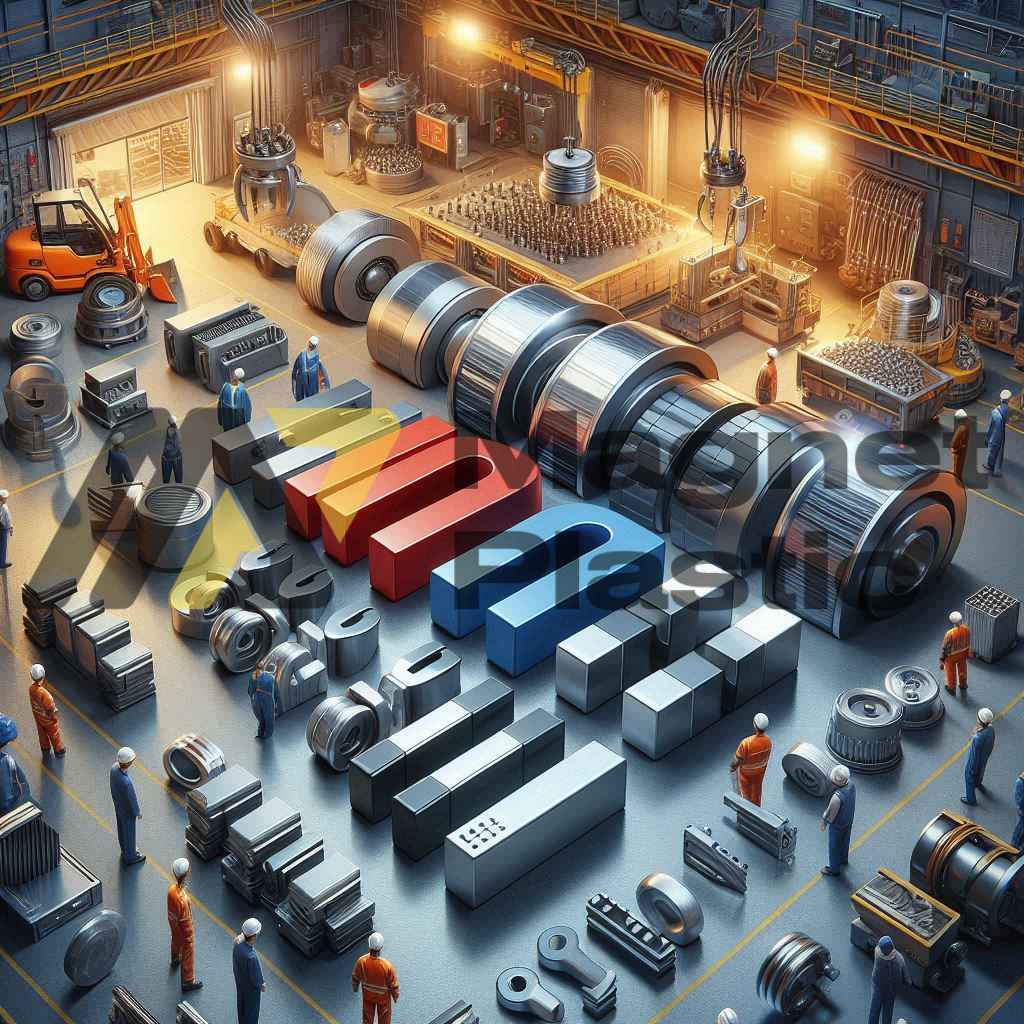Magnets in Industry
At some point in our lives, we have all come into contact with magnets. Whether it’s the typical magnets used on refrigerators or those extracted from dismantled electronic devices, magnets are an integral part of our daily lives.
When discussing the applications of magnets in industry, there is often a lack of awareness about the different types of magnets available on the market and their various uses. People tend to have a very limited understanding of their industrial applications.
The most commonly used magnets in the industrial sector fall into three main categories based on their quality: ferrite, alnico, and neodymium. Depending on the application, geometry, or working conditions, a specific type of magnet is chosen.
Ferrite Magnets
Among all types of magnets used in industry and other sectors, ferrite magnets are the most economical while still maintaining a high level of quality and offering a wide range of applications.
Their uses range from automating industrial processes to controlling equipment, performing measurements, and many other diverse functions.
These magnets can be isotropic or anisotropic. Depending on their type, they provide varying levels of magnetic power and characteristics. They are also known as ceramic magnets because they are synthesized with iron oxide, barium ferrite, or, in some cases, strontium ferrite.
Ferrite magnets can operate in environments where the temperature ranges from -40°C to 250°C, as long as the Curie temperature is not exceeded.
Alnico Magnets
Composed of aluminum, nickel, and cobalt, alnico magnets have a high remanent induction compared to other types of magnets, although they have relatively low coercivity.
One of their main advantages is their excellent resistance to high temperatures, allowing them to retain their magnetic properties even in extreme conditions. This makes them ideal for industrial applications that involve machinery operating at high temperatures.
These magnets are highly resistant to oxidation and can withstand temperatures of up to 450°C. They are commonly used in clamping and detection processes in furnaces, clutches, sensors, as well as in car engines and generators.
Neodymium Magnets
Considered next-generation magnets, neodymium magnets, like samarium magnets, belong to the rare-earth category. Due to their advanced properties, they surpass traditional magnets in power and efficiency.
These magnets have high coercivity and strong remanence, allowing for the design of compact devices with great magnetic strength. Their intense magnetic field makes them the most widely used magnets today.
Industrial Sectors Using Magnets
The automotive sector is one of the main consumers of magnets, using them in vehicle manufacturing, engines, sensors, acoustic signaling, and magnetic fastening systems.
In the electronics industry, magnets are used in elevators, robotics, sensors, and recycling. Additionally, the wind energy sector effectively implements magnets to collect and store generated energy in battery systems.
Magnets also play a crucial role in aeronautics, aerospace, medicine, and the food industry, highlighting their importance in the development and efficiency of many industrial sectors.
